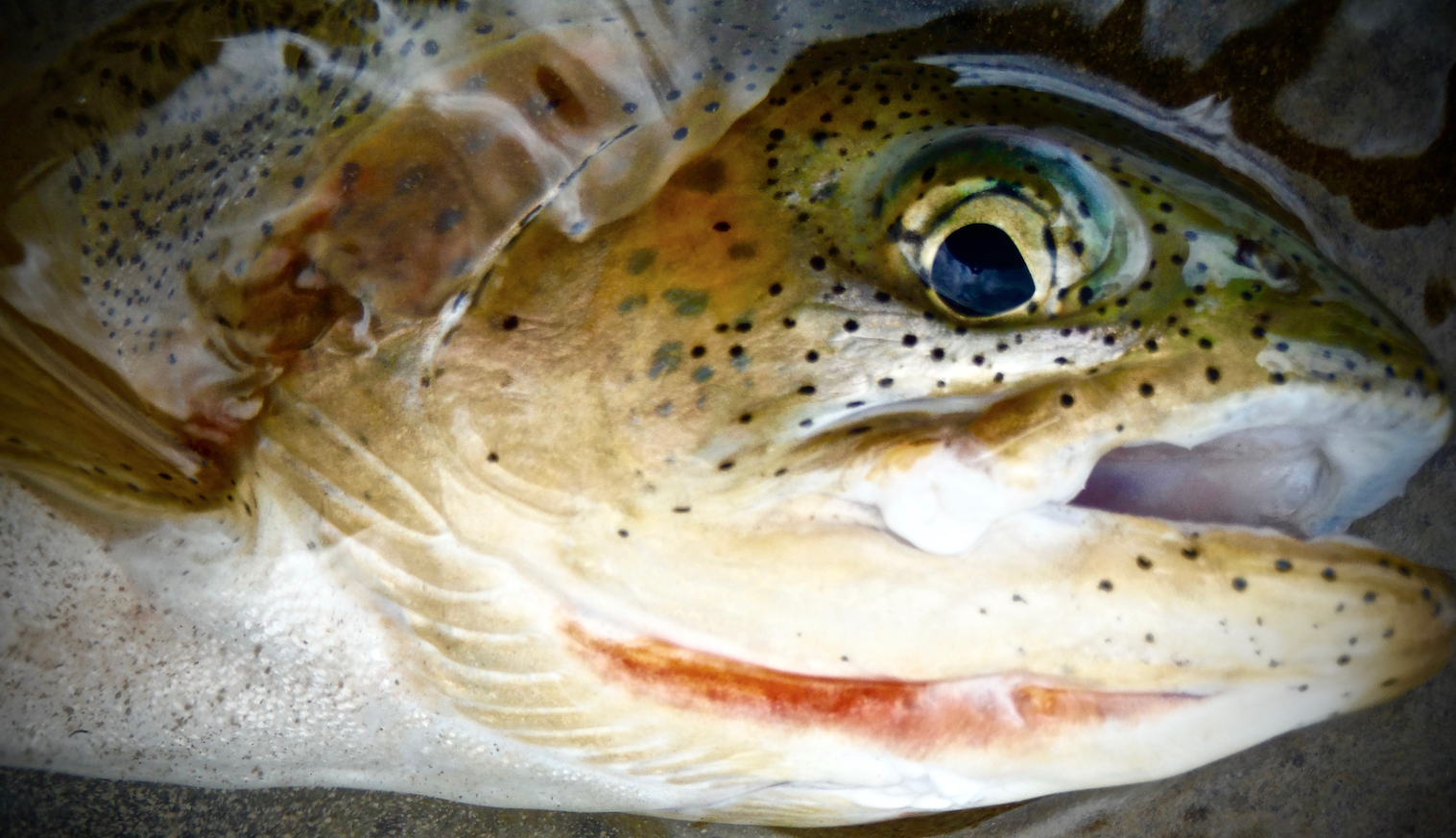It hadn’t done much but rain in the Rockies straddling the border of Montana and British Columbia last July, and the weather had put traditional fly hatches off a bit. Instead of pale-morning duns and stoneflies bursting from the snow-chilled waters of the Elk River near the town of Fernie, huge green drakes were popping in the afternoons under cloudy skies, and the river’s famed cutthroats were following them to the top.
My friend Todd Tanner graciously made the drive from his home near Flathead Lake to Fernie to show me around a bit, and I’m glad he did. He helped me navigate the somewhat complex permitting system B.C. has in place around Fernie to control visiting traffic on a number of local rivers, from the Elk, to the Bull to smaller, more intimate streams that teem with native cutthroats and bull trout. I’d parked my little camper in a modest little spot in town, and Todd and I geared up for a day on the river—he knows it well, and I was glad to have him around to show me some of its “greatest hits.”
And, of course, the greatest hits came on top, as massive four- and five-pound cutthroats chased size 10 green drakes later in the day.
These are native west slope cutthroat trout, the signature trout of Canada’s southern Rockies. These fish are perhaps the widest-ranging of the cutthroat trout species—they can be found as far south as the northern reaches of Yellowstone National Park, as far west as the eastern slope of the Cascades and north into B.C. and Alberta, where their numbers are largely healthy. That’s not to say all is perfectly fine on the Elk. As amazing as the fishery is, the river does see an influx of mine waste from upstream coal-mining operations, and worries are that those polluted flows are actually ending up in Montana waters—Lake Koocanusa and the Kootenai River.
The waste from the mines comes in the form of selenium, a metal that’s toxic in large doses to fish and other riparian wildlife residents, and, potentially, to people.
But, that day spent on the Elk last July was truly wonderful, and it’s clear that, although a problem is brewing, it’s not too late keep it from boiling over. The fishing remains stellar, and, it would seem, the fish are healthy enough to chase big flies on top.
Let’s hope the Elk’s native cutthroats remain intact for coming generations.
— Chris Hunt



